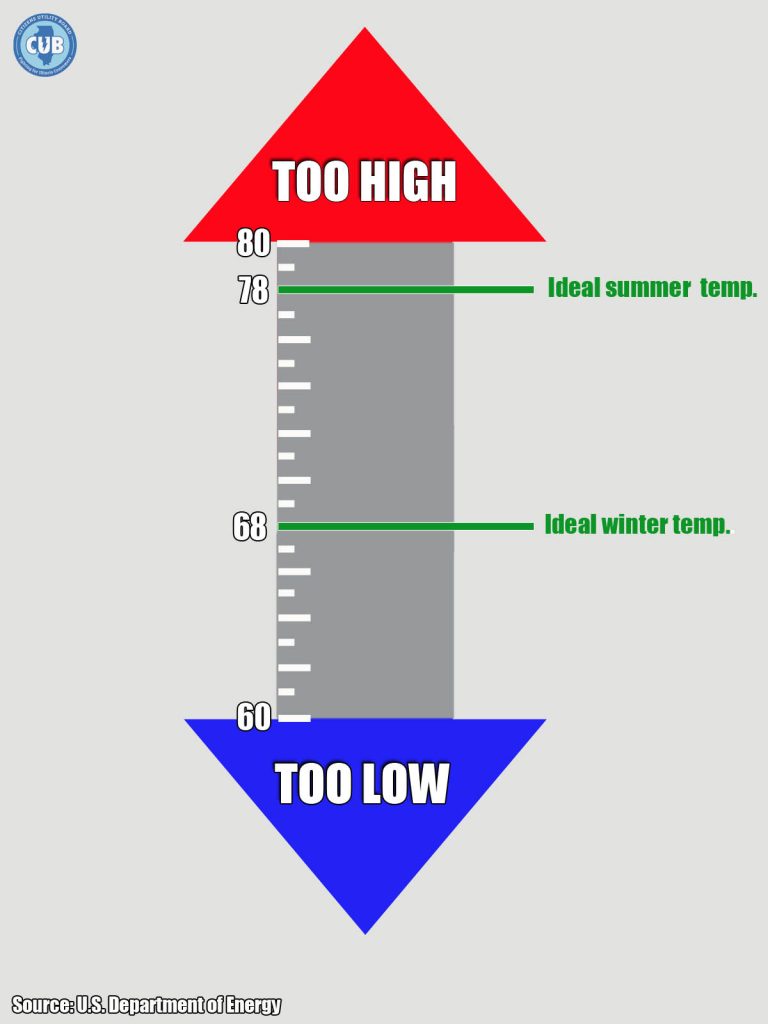 When it comes to setting the thermostat, everyone has an opinion–and that can lead to some heated debates among couples (pun intended).
When it comes to setting the thermostat, everyone has an opinion–and that can lead to some heated debates among couples (pun intended).
According to the Department of Energy, setting your thermostat back 7 to 10 degrees from its normal setting for 8 hours a day can save you up to 10 percent a year on heating and cooling costs.
Every home has different needs for comfort and safety. In your bid to lower costs, setting the temperature either too high or too low can cause damage to your home and potentially create health problems. CUB did the research and found some general guidelines for optimal summer and winter temperatures.
For the winter…
The Department of Energy says you can soften the blow to your heating bills by setting the thermostat to 68 degrees while you’re awake. While you sleep, apply layers, use your favorite blanket, and try dropping the thermostat a few degrees lower. Keep it that low when you go to work also.
Just be careful: Don’t set the temperature below 60 degrees. Not only is that dangerous to your health, but it can freeze your water pipes and cause them to burst
For the summer…
If it’s a sweltering day, set your thermostat at 78 degrees. Bump it up a few degrees when you’re asleep or away from home. The smaller the difference between the indoor and outdoor temperatures, the lower your overall cooling bill will be, the Energy Department says.
Just as you don’t want to leave your home too cold in the winter, beware of setting the thermostat too high (more than 80 degrees) in the summer. Not only can that be bad for your health, but it can lead to high humidity levels and mold growth. For the same reasons, don’t shut your central AC off completely when you go on vacation. See if your thermostat has a hold/vacation feature so air circulates periodically without using as much energy as it would if you were home.
Remember, don’t plunge your thermostat when you come home to a hot house in the summer. Setting it to a colder than normal temperature won’t cool your home any faster, and it will waste energy (and money) as the system tries to get down to the selected temperature.
All this temperature-setting (and money-saving) is made much easier with a smart thermostat, and Northern Illinois consumers can now enjoy big rebates for these high-tech devices. Read CUB’s fact sheet.
Do you have different optimal temperatures for your own home? Tell us in the comments! For more tips on cutting your bills, visit CUB’s energy efficiency page.

